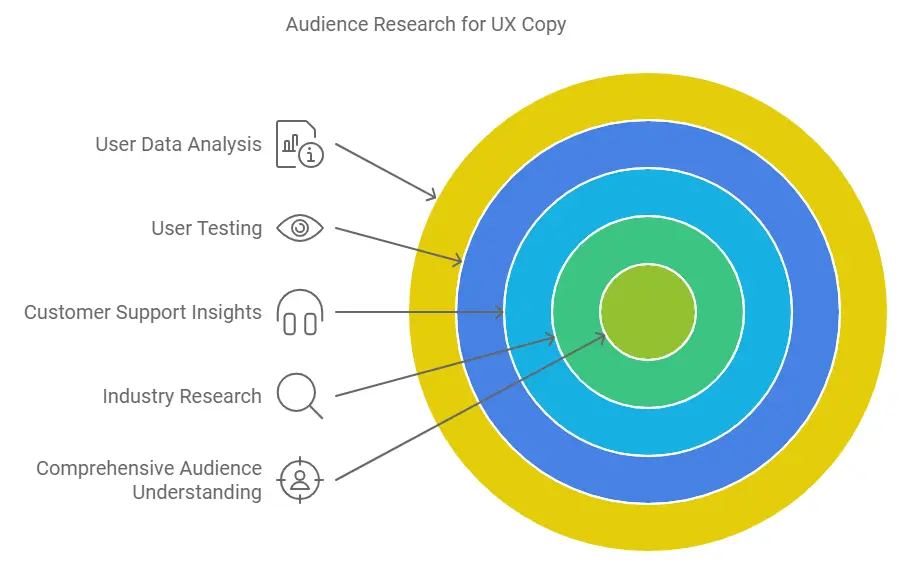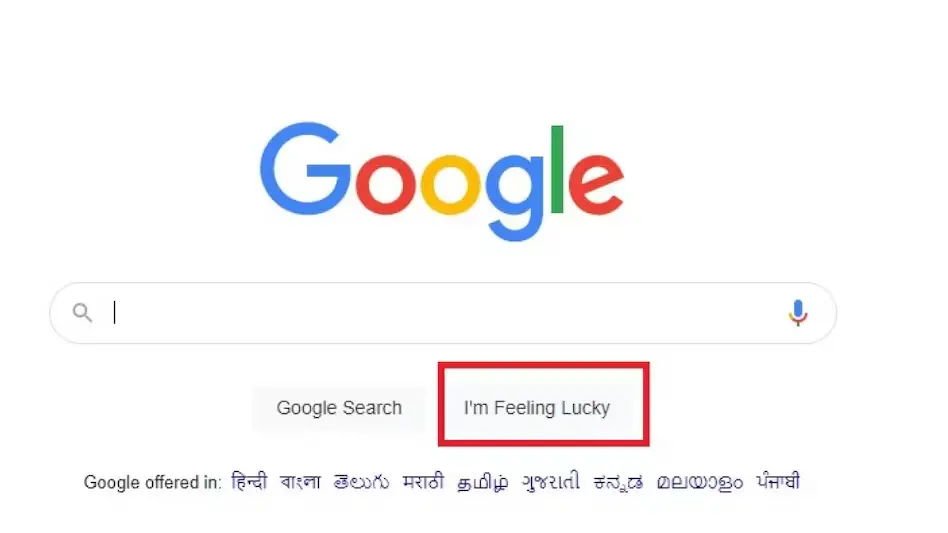
Imagine Sarah, a talented app developer, launching her new fitness-tracking app with high hopes. She’s spent months perfecting the design and features, confident it will revolutionize the market. But as users begin to download and use the app, a problem emerges. Despite its sleek interface and innovative functionality, users are getting lost, misunderstanding instructions, and ultimately abandoning the app in frustration.
Sarah is baffled. She’s poured her heart into this project, but something isn’t clicking with her users. As she digs deeper into user feedback, a pattern emerges. The issue isn’t with the app’s features or design - it’s the words on the screen. The UX copy, meant to guide and engage users, is falling short. Button labels are vague, instructions are unclear, and the overall tone feels disconnected from her target audience.
Did you know that 88% of users won’t return to a site after a bad user experience? This highlights the critical importance of good UX design to retain users.
Fortunately, there’s a solution. By focusing on effective UX copywriting, Sarah can transform her app from a source of user frustration into a seamless, enjoyable experience. This guide will walk through the essential steps of crafting UX copy that resonates with users, improves engagement, and ultimately leads to app success. Whether you’re facing a situation like Sarah’s or looking to enhance your UX writing skills, read on to discover how to create UX copy that truly connects with your audience.
UX content writing is all about creating text that helps users navigate and interact with digital products seamlessly. Effective UX copy should be clear, concise, and user-centered. It’s not just about writing words; it’s about crafting messages that resonate with users and guide them through their journey. UX copywriting services aim to enhance the user experience by providing informative and engaging content.
User experience copywriting puts the user at the center of the writing process. To create effective UX copy, you must understand your target audience, their needs, and their pain points. This involves conducting user research, creating user personas, and mapping out user journeys. By focusing on the user, you can craft copy that speaks directly to their needs and expectations.

Before you start writing, it’s crucial to research your target audience thoroughly. This involves analyzing user data, conducting surveys, and interviewing potential users. Understanding your audience’s demographics, preferences, and behaviors will help you create UX copy that resonates with them. This research phase is a critical step in delivering effective UX copywriting services.
User personas are fictional characters that represent your target audience. They help you visualize and understand the different types of users who will interact with your product. When creating user personas, include details such as age, occupation, goals, challenges, and preferences. These personas will guide your UX writing process and help you craft more targeted and effective UX copy.
A user journey map visualizes the steps a user takes when interacting with your product. It helps you identify key touchpoints where UX copy can make a significant impact. By mapping out the user journey, you can pinpoint areas where clear, concise, and helpful copy is needed most. This is an essential UX writing tip for improving the overall user experience.
Your brand voice is the personality and emotion infused into your UX copy. It should be consistent across all touchpoints and align with your brand values. Whether your brand voice is friendly, professional, or quirky, it should resonate with your target audience. Defining and maintaining a consistent brand voice is crucial for effective UX content writing.
One of the most important UX writing tips is to keep your copy clear and concise. Users should be able to quickly understand and act on the information presented. Avoid jargon, use simple language, and break down complex ideas into digestible chunks. Remember, effective UX copy is about clarity, not cleverness.
Active voice makes your UX copy more direct and engaging. Instead of saying "The button should be clicked," say "Click the button." This small change can significantly improve the clarity and effectiveness of your instructions. Using active voice is a simple yet powerful technique for creating effective UX copy.

Action-oriented language encourages users to take specific steps. Use verbs that clearly describe the action you want users to take. For example, "Download now" is more effective than "Get it here." This UX writing tip helps guide users through your product and improves overall usability.
Headlines and subheadings are often the first things users see. They should be informative, engaging, and accurately reflect the content that follows. Use keywords naturally and focus on conveying the main benefit or purpose. Well-crafted headlines are crucial for effective UX copywriting services.
Button copy is a critical element of UX writing. It should clearly communicate what will happen when the user clicks. Instead of generic terms like "Submit" or "Click here," use specific action verbs like "Download eBook" or "Start Free Trial." This UX writing tip can significantly improve click-through rates and user engagement.
Error messages are opportunities to provide helpful guidance to users. Instead of technical jargon, use plain language to explain what went wrong and how to fix it. For example, instead of "404 Error," say "Page not found. Try searching or return to the homepage." This approach to UX content writing helps reduce user frustration and improves the overall experience.
Microcopy refers to small pieces of text in the user interface, such as form labels or tooltips. These tiny bits of copy can have a big impact on user experience. Use microcopy to provide context, offer reassurance, or guide users through complex processes. Effective microcopy is a hallmark of high-quality UX copywriting services.
Storytelling can make your UX copy more engaging and memorable. Use narrative elements to explain complex concepts, showcase your product's benefits, or guide users through a process. For example, instead of listing features, tell a story about how those features solve real user problems. This UX writing tip can help create a more immersive user experience.

Power words are terms that evoke emotion and drive action. Words like "exclusive," "limited," or "guaranteed" can make your copy more compelling. However, use them judiciously and ensure they align with your brand voice. Incorporating power words effectively is a key skill in user experience copywriting.
Users often scan content rather than reading it word for word. To improve scannability, use short paragraphs, clear headings, and plenty of white space. Bold important information and use lists when appropriate. This UX writing tip helps users quickly find the information they need, enhancing the overall user experience.
UX copy should be adapted for different platforms and devices. What works on a desktop website might not be suitable for a mobile app. Consider the context in which your copy will be read and adjust accordingly. This flexibility is a crucial aspect of providing effective UX copywriting services.
While user experience should be your primary focus, it's important to consider SEO in your UX content writing. Use relevant keywords naturally throughout your copy, optimize meta descriptions and title tags, and ensure your content provides value to users. Balancing SEO and user experience is key to creating effective UX copy.
A/B testing is a powerful tool for improving UX copy. Test different versions of your copy to see which performs better. This could involve testing different headlines, button copy, or even entire page layouts. Continuous testing and iteration are essential UX writing tips for creating more effective copy over time.

User feedback is invaluable for improving your UX copy. Conduct user surveys, analyze support tickets, and monitor user comments to understand how your copy is being received. This feedback can highlight areas where your UX content writing needs improvement and guide future copywriting efforts.
Effective UX copywriting services require close collaboration with designers and developers. Work together to ensure your copy complements the design and functionality of the product. This collaboration ensures a cohesive user experience, where the copy enhances the overall product usability.
Crafting effective UX copy is a crucial aspect of creating successful digital products. By focusing on user-centered writing, conducting thorough research, and implementing best practices, you can transform your copy from a source of frustration to a powerful tool for engagement. Whether you're a seasoned UX writer or just starting, the tips outlined in this guide will help you create copy that resonates with your audience and enhances the user experience. Remember, effective UX copy is not just about words; it’s about connecting with users and guiding them through their journey.

To truly understand the effectiveness of your UX copy, you need to measure its impact. Track metrics such as conversion rates, time on page, and user engagement. Use these insights to continually refine and improve your UX content writing. Data-driven decision making is crucial for creating more effective UX copy over time.

Leading brands like Apple have mastered the art of UX copywriting, using it as a powerful tool to enhance user experience and strengthen their brand identity. Apple's UX copy is known for its simplicity and clarity, perfectly aligning with their minimalist design philosophy. From their iconic "Think Different" campaign to product descriptions like "Light. Years ahead." for the MacBook Air, Apple's copy is concise, impactful, and user-focused.

Other tech giants also excel in UX writing. Google's copy is friendly and approachable, often using conversational language to make complex technology feel accessible. Their "I'm Feeling Lucky" button on the search page is a prime example of injecting personality into UX copy.
Airbnb's UX copy focuses on creating a sense of belonging, with phrases like "Book unique homes and experiences" that resonate with their target audience. Their copy often emphasizes the unique and personal nature of their service.

Spotify uses UX writing to personalize the user experience, with playlist titles like "Discover Weekly" and "Release Radar" that speak directly to user interests.
These brands demonstrate how effective UX copy can guide users, reinforce brand values, and create emotional connections. They use clear, concise language, maintain a consistent tone across all touchpoints, and prioritize user needs in their messaging. By investing in quality UX copywriting services, these companies have created intuitive, engaging digital experiences that keep users coming back.
When it comes to crafting effective UX copy, partnering with a skilled content writing agency in Mumbai can make all the difference. This is where Lexiconn's UX copywriting services truly shine. As a leading content writing agency in Mumbai, Lexiconn brings together experienced UX writers and a deep understanding of user experience principles to transform digital products through the power of words.
Lexiconn's approach to UX content writing goes beyond simply stringing words together. As a top-tier content writing agency in Mumbai, they dive deep into understanding your target audience, product functionality, and brand voice. This comprehensive approach ensures that every piece of copy, from button labels to error messages, is tailored to enhance user experience and drive engagement.
One of the key strengths of Lexiconn's UX copywriting services is their focus on data-driven decision making. Unlike many content writing agencies in Mumbai, they don't just write copy; they test, iterate, and refine based on user feedback and performance metrics. This commitment to continuous improvement means your UX copy will evolve alongside your users' needs and behaviors.
Lexiconn's team, as a forward-thinking content writing agency in Mumbai, stays up-to-date with the latest UX writing tips and trends. They're adept at balancing clarity with creativity, crafting copy that's both functional and engaging. Whether you need help with microcopy, user onboarding flows, or comprehensive content strategy, Lexiconn has the expertise to deliver.
By partnering with Lexiconn, a premier content writing agency in Mumbai, you're not just getting words on a screen. You're investing in a user experience that guides, delights, and converts. Their holistic approach to UX copywriting can help reduce user friction, increase engagement, and ultimately drive the success of your digital products. With Lexiconn's support, your UX copy will not only resonate with users but also align with your overall business goals.



I have read and accept the Privacy Policy
Read More